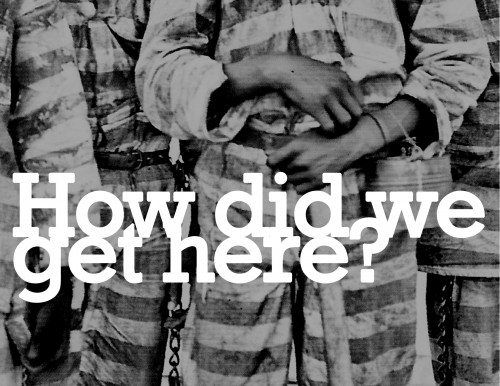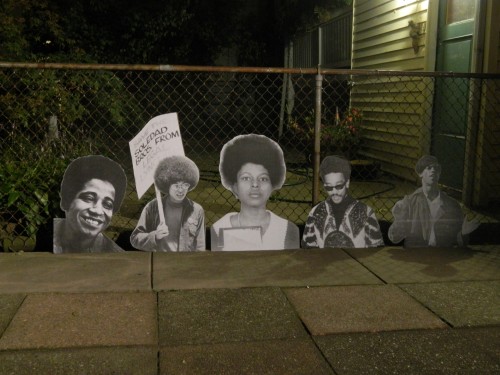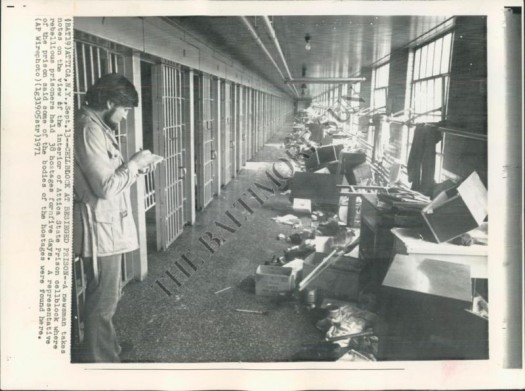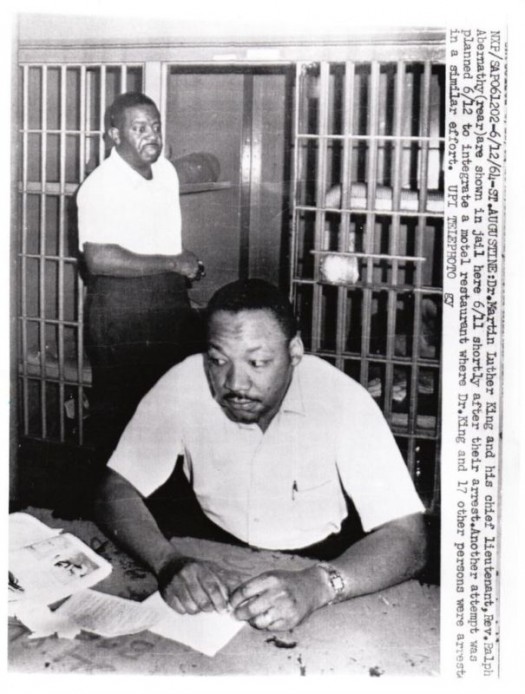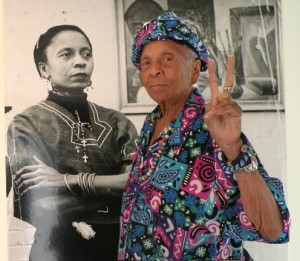The Original “Papers Please…”
It’s crunch time. Only 5 days until we open the Black/Inside: A History of Captivity & Confinement exhibition. While the exhibition focuses primarily on the concepts of captivity and confinement of Black people in the U.S., it also interrogates the meaning of “freedom.”
This brings me to an important artifact that I acquired and hope to exhibit as part of Black/Inside. It’s still iffy that we will be able to include it but I hope so.
The Constitution of the U.S. included a fugitive slave clause which insured that owners could recover runaway slaves across state lines. Any black person in the Colonies was vulnerable to being captured and sold into slavery. In order to protect themselves, free blacks had to prove that they were in fact “free.” Only a letter or document from their former slave masters or a white employer counted as “proof.” Yet even having such a document in hand was no guarantee that one couldn’t be re-enslaved. These “certificates of freedom” or “freedom papers” were treasured documents for some blacks. These documents were the tangible proof that they were no longer “captives” (to some degree).
Below is an example of a “certificate of freedom” dated 1796 that emancipates slaves named Caesar (age 20), his wife Sarah (age 25), and their children (Ann and Adam). I recently bid successfully on this item at auction and it is one of my prized possessions. I like to think of it as the original “papers please” example in American history.
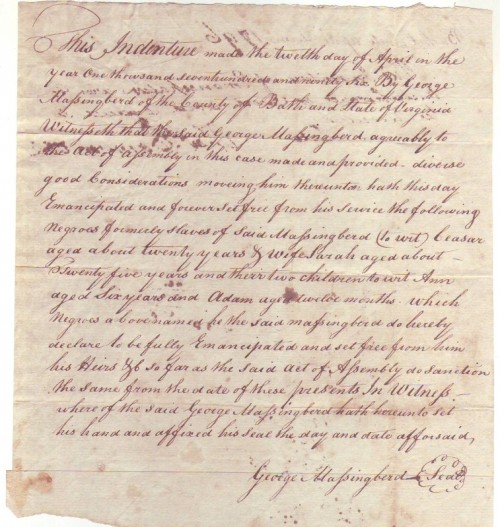
1796 Virginia Emancipation (Freedom) Papers for Slaves Caesar, Sarah, and their children (Ann & Adam)
Stop by the exhibition during its month-long run (October 23-November 21) to see if this certificate of freedom will in fact be on display…
Image of the Day: Black/Inside #1
We are just one week away from the opening of the Black/Inside: A History of Captivity & Confinement exhibition. We are working like fiends to be ready. Below is a photograph of some art pieces that my friend and exhibition designer Billy Dee has created for display. They are 3 feet tall and basically awesome. Throughout the rest of this week leading up to the opening of the Black/Inside exhibition, I will be posting images. It’s crunch time and I don’t have time to write. I should be back to a regular writing schedule in a couple of weeks… I hope that you enjoy the images.
Liberated Voices: Young Men Narrate Their Incarceration Experiences…
A couple of weeks ago, I co-organized an event about youth incarceration at the Gage Gallery at Roosevelt University. This was part of a discussion series accompanying the Juvenile-In-Justice photo exhibition.
The program featured a panel comprised of formerly incarcerated young men and was ably moderated by my friend Amanda Klonsky. I can’t stress how important it is for spaces to exist where youth can narrate their own experiences of incarceration. Their stories were poignant, moving, and searing.
If you were not lucky enough to be present to hear the stories first hand, my friend Sarah Lu kindly taped the panel and then uploaded the audio to Soundcloud. You can listen here. Please share this with others too.
Poem of the Day: Prisons of Our World by Allison Blake
Prisons of Our World
by Allison Blake
(1995, Bedford Hills Correctional Facility)
Mrs. Hennessy is getting a manicure
No matter her husband loves her no more
Been vain and spoiled so long
Can’t leave these comforts now
Love is the only sacrifice it seems
Now she finds it in her dreams.Sarah was to be a great artist
Her talents were noticed years ago
The street life smothered her dream
Now she lives in the could-have-been
Wonders each night if it should-have-been
Too afraid to think of the would-have-been.Harry reaches for the bottle
Can’t get through the night without it
Colorful pictures dangle before him
Floating in unison with the sounds in his head
Can’t turn the music off now
It starts and stops without him.Little Mary is hiding in the cellar
Doesn’t want her daddy to find her
Still hurting from last night’s beating
Can’t figure yet why it happened
Plans to run away as soon as she’s grown
Like Big Sister who works for Big Eddie.We stand alone in the prison of our space.
Collecting Photos…
Over the past couple of years of writing on this blog, I have learned that others are interested in some of the same things that I am. It makes me feel like I am not such an oddball after all. 🙂
A gentleman contacted me last month to ask about my photo collection. Specifically he was interested in how and where I go about acquiring photographs. I responded directly to him but thought that other photography enthusiasts might also be interested in some of this information in case you want to start or add to your own collection.
I have been collecting photographs for quite a few years. I have bought them at auctions, antique stores, through ebay, etc… However in just the past couple of years, a new treasure trove has become available to collectors and to the general public. Because many newspapers are suffering economically, they have begun to sell original vintage wire photographs from their archives. Many of these photographs have never been seen before and others have been published in papers across the country. In some instances, the archive photos are accompanied by a certificate of authenticity.
A couple of tips for the novice collector who wants to purchase wire photos. You should be mindful that wire photos were sometimes printed on thin and glossy paper so that they could be transmitted through telegram or later faxes. In some cases, the newspaper archives sell photographs that are actually printed on regular photo paper (like you are used to seeing). This accounts for the difference in price that you will see when you order photographs through their websites. My rule of thumb is that the lower the price, the more likely that you are purchasing a wire photo printed on thin and glossy paper. The higher the price, the more likely that this is a print on regular photo paper. Make sure to check first.
The other thing to be on the lookout for are the markings that appear on some of the photographs – these sometimes include lines or writing. The writing usually cannot be removed but the lines from grease pencils most often can.
Below is an example of a photograph depicting the aftermath of the Attica Prison rebellion that is in my collection. It comes from the Baltimore Sun archives so you can see the watermark across the image. The actual photograph does not have the watermark on it. You can find other original vintage archive photos from the Baltimore Sun as well as from the Chicago Tribune at this website. Be careful not to start looking through their offerings if you are in a hurry because you will surely be late for your scheduled engagement. It can become an all-consuming experience (trust me).
Here is another great print from my collection of wire photos. This one depicts Dr. King and Rev. Abernathy in jail on 6/11/64 and is a photo from the UPI.
Lupe Fiasco & Violence in Chicago
I gave a keynote speech at a conference yesterday about youth violence and trauma. I wasn’t really sure what I wanted to say so I procrastinated until the night before and then tried to put pen to paper. Since I was struggling, I took to Facebook to share my troubles. A friend of mine recommended an interview with Lupe Fiasco that had just been published in the Chicago Sun Times. He suggested that I watch it for inspiration. The video of the interview is below:
Dr. Margaret Burroughs: Prison Educator & Reformer
Dr. Burroughs was born in Louisiana in 1917. She moved to Chicago as a child. She was an artist who studied at the Art Institute of Chicago, a historian, an educator, and an activist. Basically, Dr. Burroughs was a powerhouse and a Chicago legend.
Image of the Day: Rare Chain Gang Footage (1902)
Rare footage of a Chain Gang from Charleston, South Carolina in 1902. You will notice that all of the prisoners are black.
Youth Violence & the “War on Drugs”
A few weeks ago, the Federal Interagency Forum on Child and Family Statistics released its annual “America’s Children: Key National Indicators of Well-Being” report. I always look forward to reading the report because it usually challenges the popular conceptions (especially those advanced by the media) that our children and youth are all in deep trouble. Nothing could actually be further from the truth. In fact, these reports usually paint a portrait of a resilient group of people who are thriving IN SPITE of adult malpractice. Despite the fact that more children and youth are living in poverty, less teens are having babies and less of them are committing violent crimes. One might not know this if you simply relied on the mass media to learn about how youth are faring in our society.
Below is a chart that I think can’t be published enough. It highlights the fact that since around 1993, the percentage of serious violent crimes that involved youth has been steadily declining from a high of 26 percent in 1993 to 18 percent in 2010. In other words, the vast majority of the people in this country who commit serious violent crimes in the U.S. are adults.
